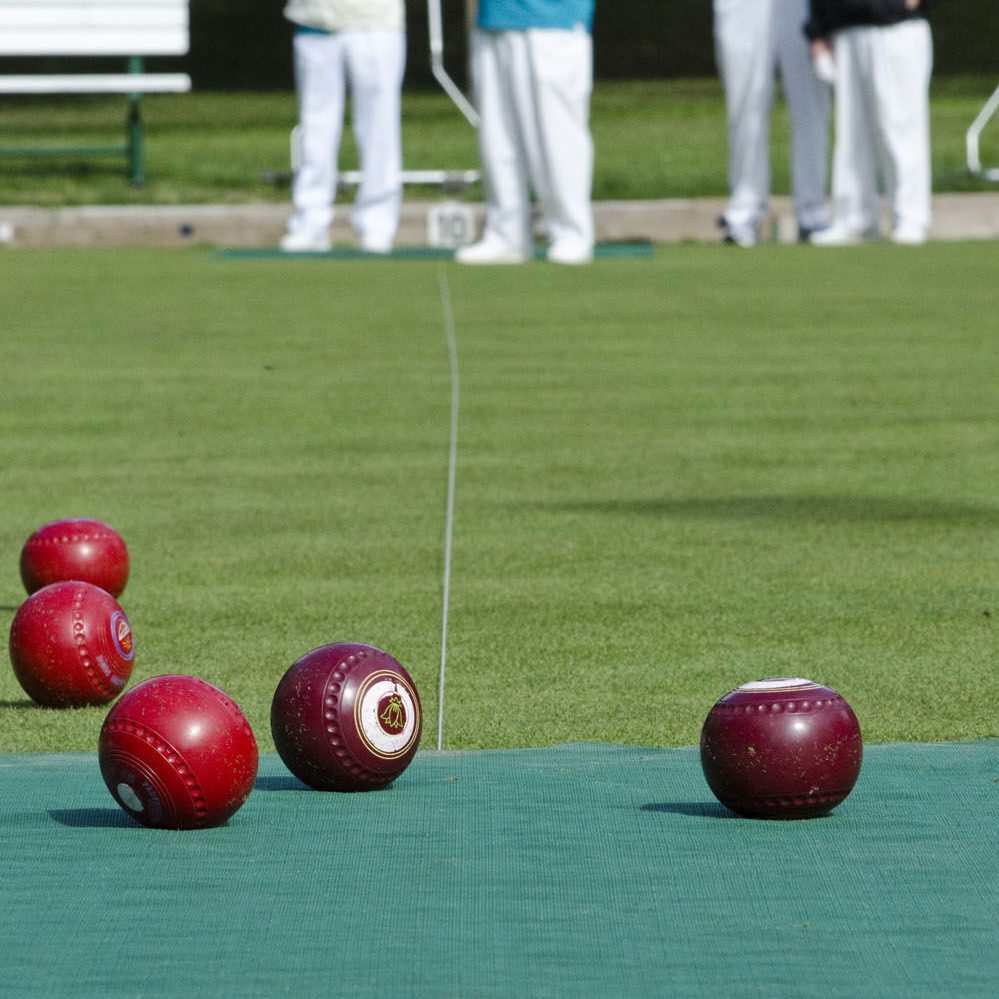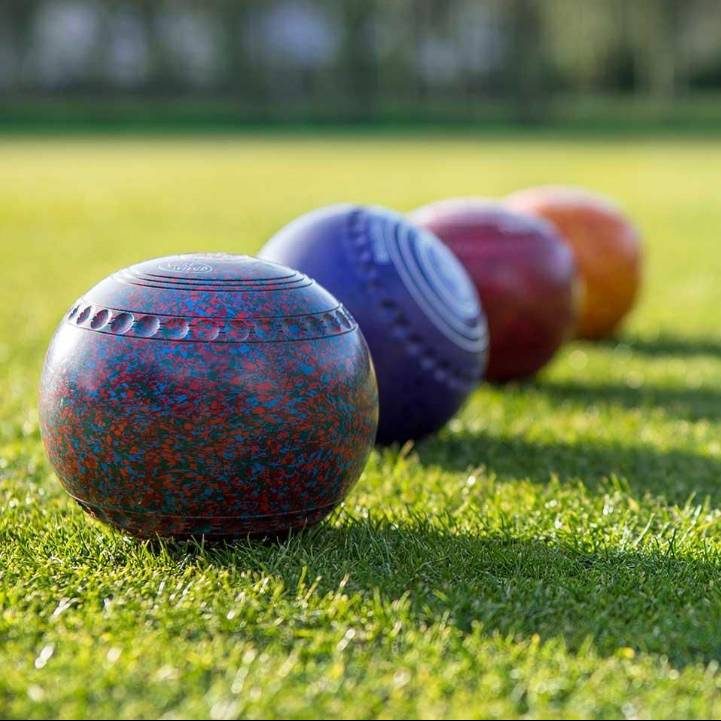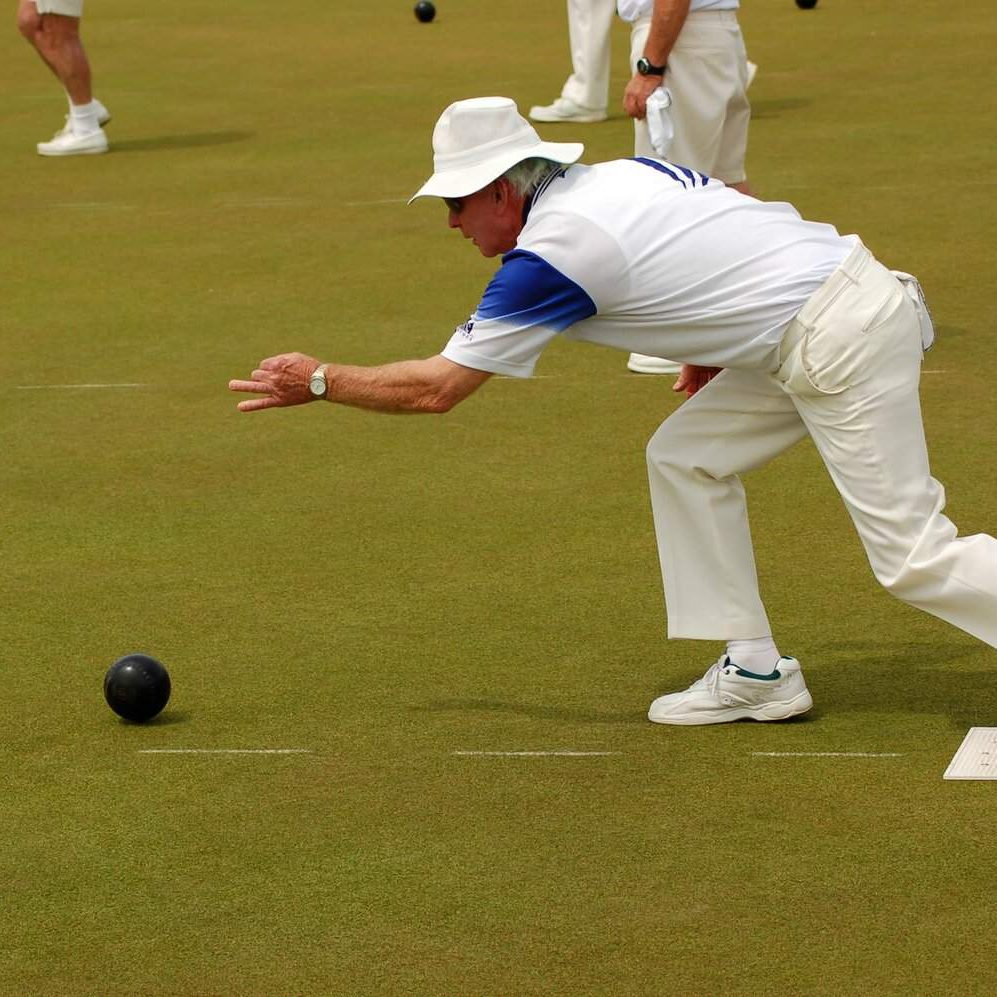What is Lawn Bowling?
Lawn bowling is a sport where players roll bowls toward a target ball. The game is played on a flat, rectangular green. The goal is to get the bowl as close as possible to the target, called the “jack.”
History and Origins of Lawn Bowling
Lawn bowling has been enjoyed for centuries. Its origins date back to ancient Egypt and Rome. In the 13th century, lawn bowling became popular in Europe, especially in England. Kings and nobles often played it for recreation. Over time, the game spread worldwide, gaining popularity in countries like Australia, Canada, and New Zealand. Today, lawn bowling is enjoyed by players of all ages and skill levels.
Overview of the Game and Its Objectives
The main objective of lawn bowling is precision. Players aim to roll their bowls closest to the jack. It can be played in singles, pairs, triples, or teams of four. Each match consists of ends, similar to rounds. Players deliver their bowls alternately, trying to outscore their opponents. Strategy, aim, and control are crucial for success. Lawn bowling combines skill and mental focus, making it both challenging and enjoyable.

Equipment Needed for Bowling
To enjoy lawn bowling, you need the right equipment. Proper tools ensure better performance and game enjoyment. Below are the essentials for a successful lawn bowling experience.
Bowls: Types and Sizes
Bowls are the primary equipment used in lawn bowling. They are weighted to curve during play. Each bowl weighs differently to suit players’ needs. Sizes vary from small to large and should fit comfortably in your hand. Choose bowls based on your grip and skill level. Most players prefer personalized bowls for precise control.
Jack: The Target Ball
The jack is the small, white target ball used in lawn bowling. Players aim their rolls at the jack. It is lightweight, easy to see, and an essential piece of the game. Ensure the jack you use meets regulation standards. Proper jack placement sets the tone for an engaging match.
Measuring Tools and Other Accessories
Measuring tools help determine the distance between bowls and the jack accurately. They include tape measures and calipers. Other accessories include mats for bowl delivery and scorecards for recording points. These tools enhance fair play and organization during a match. Quality equipment supports better focus and gameplay.

Setting Up the Bowling Green
Properly setting up the lawn bowling green is essential for the game. A well-prepared green ensures smooth gameplay and provides an even surface for accurate rolling. Understanding the layout and maintaining the lawn are key aspects players should focus on.
Understanding the Layout of the Green
The lawn bowling green is rectangular and flat, often divided into playing sections known as rinks. Each rink serves as a lane where players compete. The size and layout of the green follow standard regulations. The edges and boundaries are clearly marked to guide gameplay.
The green also includes a delivery mat and the target area. Players start their rolls from the mat and aim toward the jack. Knowing this structure helps ensure a fair and organized game. New players should familiarize themselves with these areas before playing.
Maintenance and Preparation of the Lawn
Maintaining the lawn is critical for optimal play. A smooth, even surface allows bowls to roll consistently. The lawn should be mowed regularly to keep the grass short and uniform. Remove debris like twigs or leaves to avoid interference.
Watering the lawn prevents damage and ensures healthy grass, especially in dry climates. Aeration improves soil quality and supports grass growth. Inspect the green frequently for uneven spots or wear and repair as needed.
Preparation also involves ensuring proper equipment is available, such as the jack and measuring tools. A well-prepared green contributes to the enjoyment and fairness of the game.

Rules and Regulations of Lawn Bowling
Understanding the rules of lawn bowling ensures a fair and enjoyable game. Players must follow specific guidelines to score points, maintain etiquette, and avoid penalties.
Scoring System and Guidelines
The scoring system in lawn bowling revolves around proximity to the jack. After each “end” or round, players determine which bowl is closest to the jack. The player or team with the closest bowl earns points. If multiple bowls from the same side are closer than any opponent’s, additional points are awarded.
Games can be played to a predetermined score, such as 21 points, or with a fixed number of ends. The number of bowls rolled varies by game format, and players alternate turns. Measuring tools are used to resolve tight decisions regarding bowl distances.
Adhering to scoring guidelines avoids disputes and keeps the game organized. Players must respect the process and decisions made by referees, if present.
Conduct and Etiquette During a Match
Good sportsmanship is essential in lawn bowling. Players must exhibit respectful behavior at all times—this includes refraining from distracting opponents during their rolls.
Wait quietly for your turn and avoid standing in the player’s line of sight. Communication must be friendly and constructive during the game. Disputes should be resolved calmly with mutual agreement or referee intervention.
Proper attire is often required, depending on the club’s rules or competition standards. Ensure footwear is appropriate to avoid damaging the green.
Winning and losing gracefully shows professionalism. Lawn bowling is as much about enjoyment and camaraderie as it is about competition.
Common Penalties and Fouls
Several actions can result in penalties during lawn bowling. These include delivering bowls from outside the mat area, stepping over the rink boundary, or interfering with opponents’ bowls.
Players who fail to observe the jack’s placement rules may face bowl disqualification. Unsportsmanlike conduct, such as arguing or deliberately delaying the game, can also lead to warnings or penalties.
In team formats, coordination is crucial—errors in bowl order or miscommunication can disrupt the game and result in fouls. Keeping track of the rules helps avoid unnecessary mistakes and ensures a fair match.
By understanding scoring, etiquette, and penalties, players can improve their game and enjoy lawn bowling to the fullest.

Techniques and Strategies for Beginners
Learning techniques and strategies is vital for improving in lawn bowling. New players should focus on mastering basic skills like grip, rolling, and aim. Strategic thinking adds a competitive edge and makes the game more enjoyable.
How to Grip the Bowl Correctly
Holding the bowl correctly ensures accuracy and control. Here are key tips for gripping:
- Choose the Right Bowl Size: Select a bowl that fits comfortably in your hand. The right size enhances your grip.
- Find Your Natural Grip: Use your fingers, not your palm, to hold the bowl. Test different grips to find what feels natural.
- Focus on Finger Placement: Place your fingers evenly around the bowl’s surface. This balance helps with rolling precision.
Practice gripping techniques regularly to build confidence and consistency.
Basic Rolling Techniques and Aim
Perfect your rolling skills to improve accuracy. Follow these essential rolling practices:
- Maintain a Proper Stance: Stand firmly with one foot on the delivery mat. Use a stable posture for balance.
- Control Your Swing: Keep your arm straight during the roll. Avoid jerky movements for smoother delivery.
- Focus on the Jack: Always aim your bowl toward the jack. Visualize the path before rolling.
- Adjust for Weight and Bias: Bowls are weighted to curve. Adjust your roll to align with the bowl’s bias for better precision.
Practice rolling techniques repeatedly to boost your consistency and skill.
Strategies for Improving Your Game
Strategic thinking separates good players from great ones. Adopt these effective strategies:
- Study the Green: Learn how the surface influences bowl movement. Adjust your rolls accordingly.
- Use Defensive and Offensive Plays: Position your bowls strategically to block opponents or secure points near the jack.
- Understand Timing: Deliver bowls at the right speed. Avoid underpowering or overpowering your rolls.
- Observe Rival Techniques: Watch skilled players during matches. Adapt their methods to enhance your own.
Stick to regular practice and strategic learning for gradual improvement in lawn bowling. Beginners who focus on both techniques and strategies will enjoy better results and develop their skills faster.
Common Formats and Variations of Bowling
Lawn bowling offers diverse game formats and settings to suit every player’s preference. Understanding these options enhances your enjoyment and strategy.
Singles, Pairs, Triples, and Fours
Lawn bowling matches can be played individually or in teams of varying sizes:
- Singles: In singles, one player competes against another. Each player rolls multiple bowls per end. This format emphasizes individual skill and precise strategy.
- Pairs: Pairs matches involve teams of two. Each player rolls a set number of bowls. Coordination with your partner is key to creating effective plays.
- Triples: Triples include teams of three, with each player rolling fewer bowls. Strategic teamwork matters here, as players work together to win.
- Fours: In fours, teams of four players compete. Each player delivers fewer bowls, making teamwork and positioning vital.
Game formats allow players to compete in ways that match their preferences and skill levels.
Indoor and Outdoor Variations
Lawn bowling can be enjoyed both indoors and outdoors, providing flexibility based on location and weather:
- Outdoor Lawn Bowling: Outdoor games are played on grassy greens. The natural surface adds challenge due to variations in terrain and weather.
- Indoor Lawn Bowling: Indoor matches are held on smooth artificial surfaces. Indoor greens provide consistent conditions, allowing for year-round play.
Both settings require adaptation. Outdoor games challenge players to adjust for surface irregularities, while indoor bowling fosters precision and speed.
Having a choice of game formats and locations adds versatility to lawn bowling, making it accessible to everyone.

Tips for Getting Started in Lawn Bowling
Starting your lawn bowling journey requires preparation and guidance. Follow these tips to improve quickly and enjoy the game.
Joining a Local Bowling Club
Local bowling clubs are great for beginners seeking support and a community. Joining a club offers:
- Access to Equipment: Clubs provide shared gear, saving beginners from initial expenses.
- Friendly Competitions: Participate in casual matches to gain confidence and skills.
- Learning from Members: Experienced players can teach techniques and strategies.
- Social Connections: Connect with players who share your interest and passion for lawn bowling.
Visit clubs in your area and inquire about beginner sessions or open events.
Finding Coaches or Training Resources
Guidance from coaches or training materials accelerates your progress in lawn bowling. Here’s what to look for:
- Expert Coaches: Find professionals who offer personalized advice and correct mistakes.
- Tutorials: Watch video guides or read books focused on lawn bowling basics.
- Workshops: Attend workshops or beginner classes for hands-on learning.
- Online Communities: Join forums or groups where players discuss tips and techniques.
Resources like these provide a solid foundation for improving your game.
Practice Routines and Drills for Beginners
Regular practice builds confidence and enhances skills. Incorporate these drills into your routine:
- Target Practice: Aim bowls at the jack repeatedly to improve accuracy.
- Distance Control: Practice rolling bowls with varying power for distance.
- Bias Adjustment: Experiment with bowl weights to understand curve dynamics.
- Game Simulation: Play mock matches to develop strategy and timing.
Dedicate time weekly for consistent improvement. Practice helps beginners master lawn bowling fundamentals and enjoy the game.
Benefits of Playing Lawn Bowling
Lawn bowling is more than a sport; it provides numerous physical, mental, and social benefits. For people of all ages, it offers a great way to stay active and engaged. Let’s explore the main advantages of playing lawn bowling.
Physical Fitness and Mental Relaxation
- Improves Physical Activity: Lawn bowling involves constant movement, bending, and rolling. These actions enhance flexibility and balance.
- Boosts Cardiovascular Health: Walking across the green provides light cardiovascular exercise, promoting heart health.
- Reduces Stress: The calming nature of the game helps players relieve tension and stay relaxed.
- Enhances Concentration: Lawn bowling requires focus and strategy. These practices sharpen mental clarity and decision-making skills.
- Supports Muscle Strength: Carrying and rolling bowls strengthens the muscles in your arms and shoulders.
For mental health, lawn bowling encourages mindfulness, keeping your thoughts centered on the game. The mix of physical activity and relaxation makes it a uniquely rewarding experience.
Social Interaction and Community Building
- Fosters New Friendships: Playing with others creates opportunities to meet new people and form bonds.
- Promotes Teamwork: Team-based formats like pairs or fours develop cooperation and social skills.
- Builds Community Spirit: Local clubs provide a welcoming environment for players of all skill levels.
- Encourages Inclusive Participation: Lawn bowling is accessible to everyone, including seniors and people with limited mobility.
- Organizes Social Events: Clubs often host tournaments and gatherings, creating space for shared experiences.
By joining a lawn bowling community, you gain a sense of belonging and camaraderie. The social aspects of the game are as enriching as its physical benefits.
Lawn bowling offers an excellent balance of fitness, relaxation, and social connections. Embracing the sport brings enjoyment, health benefits, and a chance to connect with like-minded people.
